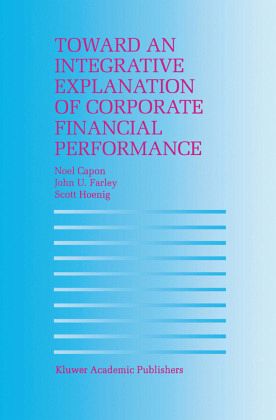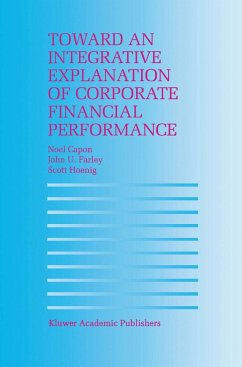
Toward an Integrative Explanation of Corporate Financial Performance
Versandkostenfrei!
Versandfertig in 1-2 Wochen
115,99 €
inkl. MwSt.
Weitere Ausgaben:

PAYBACK Punkte
58 °P sammeln!
This volume is a milestone on our journey toward developing a more comprehensive understanding of the underpinnings of corporate financial performance. Weare concerned with both the factors that cause the financial performance of some firms to be better than others at a point in time and those factors that influence the trajectory of firm financial performance over time. In addressing these issues, we consider theoretical and empirical work on financial performance, drawn from several literatures, as well as present the results from our own empirical study. The review of the theoretical and em...
This volume is a milestone on our journey toward developing a more comprehensive understanding of the underpinnings of corporate financial performance. Weare concerned with both the factors that cause the financial performance of some firms to be better than others at a point in time and those factors that influence the trajectory of firm financial performance over time. In addressing these issues, we consider theoretical and empirical work on financial performance, drawn from several literatures, as well as present the results from our own empirical study. The review of the theoretical and empirical work is contemporary; the major portion of data comprising the empirical study was collected in the early 1980s as part of the Columbia Business School project on corporate strategic planning, but some data sequences extend into the mid-1980s and early 1990s. Our goals are to improve understanding of firm financial performance by developing a more integrated framework and to develop a research agenda based on what we have learned. This volume consists of four chapters, 12 appendices that provide detailed technical support and development for various portions of the discussion and an extensive set of references. It interweaves results from published literature in various fields with our original empirical work and develops an integrative approach to the study of firm fmancial performance.














